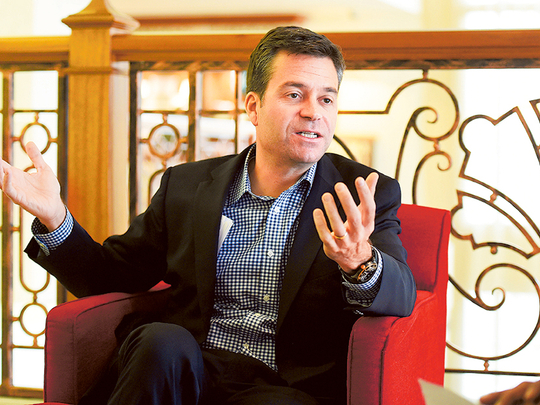
Dubai: Autodesk, the provider of modelling software for architects and animators, is trying hard to change that perception and is creating funds and innovation labs to accelerate 3D printing across all industries.
The US company has created a $100 million Spark Fund — a platform established to support ideas that push boundaries of 3D printing and nurture the companies that bring new ideas to the market.
It recently signed a deal with Dubai Future Foundation to provide financing for entrepreneurs and businesses in the region.
“As a company we are not shy into investing further, not only in 3D printing but in overall manufacturing,” Greg Eden, global vice-president for industrial strategy at Autodesk, told Gulf News.
He said the $100 million fund is for worldwide. The 3D printing or additive manufacturing has been around for 30 years but it is now hitting the mainstream.
The initiative aims to make Dubai and the UAE an international hub for the sector and also drive the growth of global 3D printing market which is expected to be worth $300 billion by 2030.
“We have seen 3D printing begin to have a secure impact in design and manufacturing of a product. The biggest impact the 3D printing has is on prototyping of products and what we are seeing is in actual products that are used in real life.
“We have been working with Airbus to use some advanced design techniques and 3D printing to help light weight certain parts of the aeroplane such as partition of the planes by 45 per cent. We can now make more complex shapes than ever before and make them cheaper than before. What these technologies are enabling is the reversal of industrial revolution,” he said.
He said that additive manufacturing is having a profound impact on how manufacturers of all sizes look at product design, production, distribution and economies of scale.
According to information technology research firm Gartner, business applications of 3D printing are predicted to grow at an annual growth rate of more than 106 per cent and sales greater than $13.4 billion by 2018.
According to research firm Wohlers Associates, 3D-printed products and services grew by 26 per cent last year, to be worth nearly $5.2 billion. It expects the industry to grow to $6 billion by 2017 and $10.8 billion by 2021.
McKinsey, a management consultancy, reckons that in terms of things like better products, lower prices and improved health, 3D printing could have an economic impact of up to $550 billion a year by 2025.
Compared with the $70 billion machine-tool market, Eden said that additive manufacturing is still tiny. But it is expanding rapidly. The 3D printing is changing the manufacturing sector in a big way. The three industries AEC (architecture, engineering and construction), manufacturing, media and entertainment are adopting the 3D technology in a big way.
Already, he said that areas of medicine such as dentistry are benefiting from 3D printers and the next will be the consumer electronics industry in products such as headphones and wristwatches.
The construction industry is the best growth driver right now and with the industry booming in the region, especially in Dubai and Qatar.
Eden said that there is a demand for fast and high-quality construction projects in the region, especially in Dubai. Prefab construction is going to get more popular and that is where 3D printing can be useful, building materials off-site and bringing it on-site.
“I haven’t seen so many cranes anywhere in the world, except in Dubai,” he said.
His Highness Shaikh Mohammad Bin Rashid Al Maktoum, Vice-President and Prime Minister of the UAE and Ruler of Dubai, had said that the emirate seeks to ensure that 25 per cent of buildings in the city are based on 3D printing technology by 2030.
Audodesk’s software was used for most of the designing of Qatar Rail, AutoCAD was used to design Burj Khalifa.
Eden said that large companies continue to use 3D prototyping to push the boundaries of innovation.
Coupled with virtual reality and augmented reality, he said that it can help customers create digital prototypes.
“Virtual reality does get lot of attention but I get excited about AR, particularly from a professional perspective. You can improve the way you work and that is where AR becomes interesting. There is nothing like holding that prototypes in your hand. It cuts costs and the time to make changes which was laborious before.
“When you are able to experience the prototype virtually, and then physically print that prototype, that is really powerful. The new method allows developers to have a prototype in their hands in as little as a week after they create a new design — compared with a previous wait time of three to four months,” he said.
Autodesk has created creative workshop spaces in San Francisco and Boston to blend the virtual software with the physical world.
“These spaces unlock the creativity for us but also for customers and the wider community. The way things are being designed, made and used is radically transforming, and Autodesk is fuelling that change,” he said.












